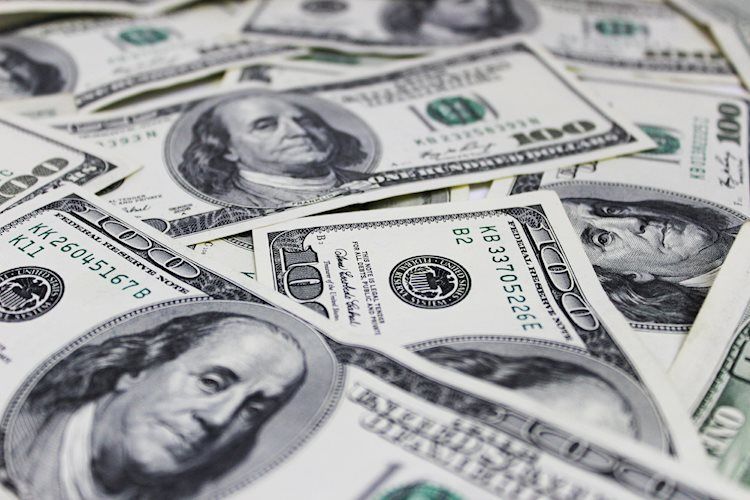- The Greenback trades flat on Wednesday morning as US Dollar bulls are licking their wounds.
- US traders can let the dust settle over surprise dovish comments and look forward to US GDP.
- The US Dollar Index is trading in the 102-area and the RSI is getting oversold.
The US Dollar (USD) bulls are probably not a fan of the US Federal Reserve for a while after the market move on Tuesday. US Federal Reserve Christopher Waller from the board of governors, surprised markets with a very dovish statement on Tuesday, which in its turn made US yields plunge and promptly devalued the Greenback. The US Dollar lost steam in Asia trading this Wednesday morning, though it looks to be trying to get a grip as it is off the lows for now.
On the economic front the calendar is picking up in weight as this Wednesday the US Gross Domestic Product is due to be released. The third quarter preliminary reading might give some counterweight against the recent downturn in the Greenback and could convince traders that the US economy as such is still growing at a solid pace against most of its competitors. Some readjustment might be granted as the US Dollar may have been a bit over punished in the drop on Tuesday.
Daily digest: US GDP in focus
- Around 12:00 GMT this Wednesday kicked off with the Mortgage Bankers Association issuing its Mortgage Applications for the week of November 24th. Previous number was 3% and the new print at 0.3%.
- At 13:30 GMT a chunky batch of data will be released:
- The Gross Domestic Product on an annualised basis for the third quarter will be released: Previous result was 4.9% with expectations for the third quarter at 5%.
- The Gross Domestic Product Price Index for the third quarter will come out as well: Previous was at 3.5% and an unchanged 3.5% is expected.
- Quarterly Personal Consumption Expenditures Prices are to be released as well. The previous number was at 2.9% with no forecast pencilled in.
- Wholesale Inventories for October are to be released in all the noise of the US GDP, and is expected to head from 0.2% to 0.1%.
- The Fed’s beige book is expected to be issued near 19:00 GMT.
- Asian equities are not buying into the dovish comments from the Fed and are continuing their sell-off with the Hong Kong Hang Seng leading the descent; being down over 2%. European and US equities are mildly in the green.
- The CME Group’s FedWatch Tool shows that markets are pricing in a 98.7% chance that the Federal Reserve will keep interest rates unchanged at its meeting in December. A very slim chance of a cut is now showing.
- The benchmark 10-year US Treasury Note trades at 4.29%, another substantial leg lower after the comments from Christopher Waller from the Fed.
US Dollar Index technical analysis: Overstretched
The US Dollar has added another leg to its losses, making it a three day losing streak thus far. Though, some small relief could be on the horizon as US GDP numbers later this Wednesday might help to at least recoup a bit of earlier losses. Add into that reasoning the Relative Strength Index (RSI) on the daily DXY chart which is breaking into “oversold”, and some relief looks granted in this descent.
The DXY is sliding further below the 200-day Simple Moving Average (SMA), which is near 103.60. The DXY could still make it back up there, should US traders come back in the market and start buying the current dip. A two-tiered pattern of a daily close and next an opening higher would quickly see the DXY back above 104.28, with the 200-day and 100-day SMA turned over to support levels.
To the downside, historic levels from August are coming into play, when the Greenback summer rally took place. The lows of June make sense to look for some support, near 101.92, just below 102. Should more events take place that initiate further declines in US rates, expect to see possible even a near full unwind of the 2023 summer rally, heading to 100.82, followed by 100.00 and 99.41.
Interest rates FAQs
Interest rates are charged by financial institutions on loans to borrowers and are paid as interest to savers and depositors. They are influenced by base lending rates, which are set by central banks in response to changes in the economy. Central banks normally have a mandate to ensure price stability, which in most cases means targeting a core inflation rate of around 2%.
If inflation falls below target the central bank may cut base lending rates, with a view to stimulating lending and boosting the economy. If inflation rises substantially above 2% it normally results in the central bank raising base lending rates in an attempt to lower inflation.
Higher interest rates generally help strengthen a country’s currency as they make it a more attractive place for global investors to park their money.
Higher interest rates overall weigh on the price of Gold because they increase the opportunity cost of holding Gold instead of investing in an interest-bearing asset or placing cash in the bank.
If interest rates are high that usually pushes up the price of the US Dollar (USD), and since Gold is priced in Dollars, this has the effect of lowering the price of Gold.
The Fed funds rate is the overnight rate at which US banks lend to each other. It is the oft-quoted headline rate set by the Federal Reserve at its FOMC meetings. It is set as a range, for example 4.75%-5.00%, though the upper limit (in that case 5.00%) is the quoted figure.
Market expectations for future Fed funds rate are tracked by the CME FedWatch tool, which shapes how many financial markets behave in anticipation of future Federal Reserve monetary policy decisions.
Read the full article here

